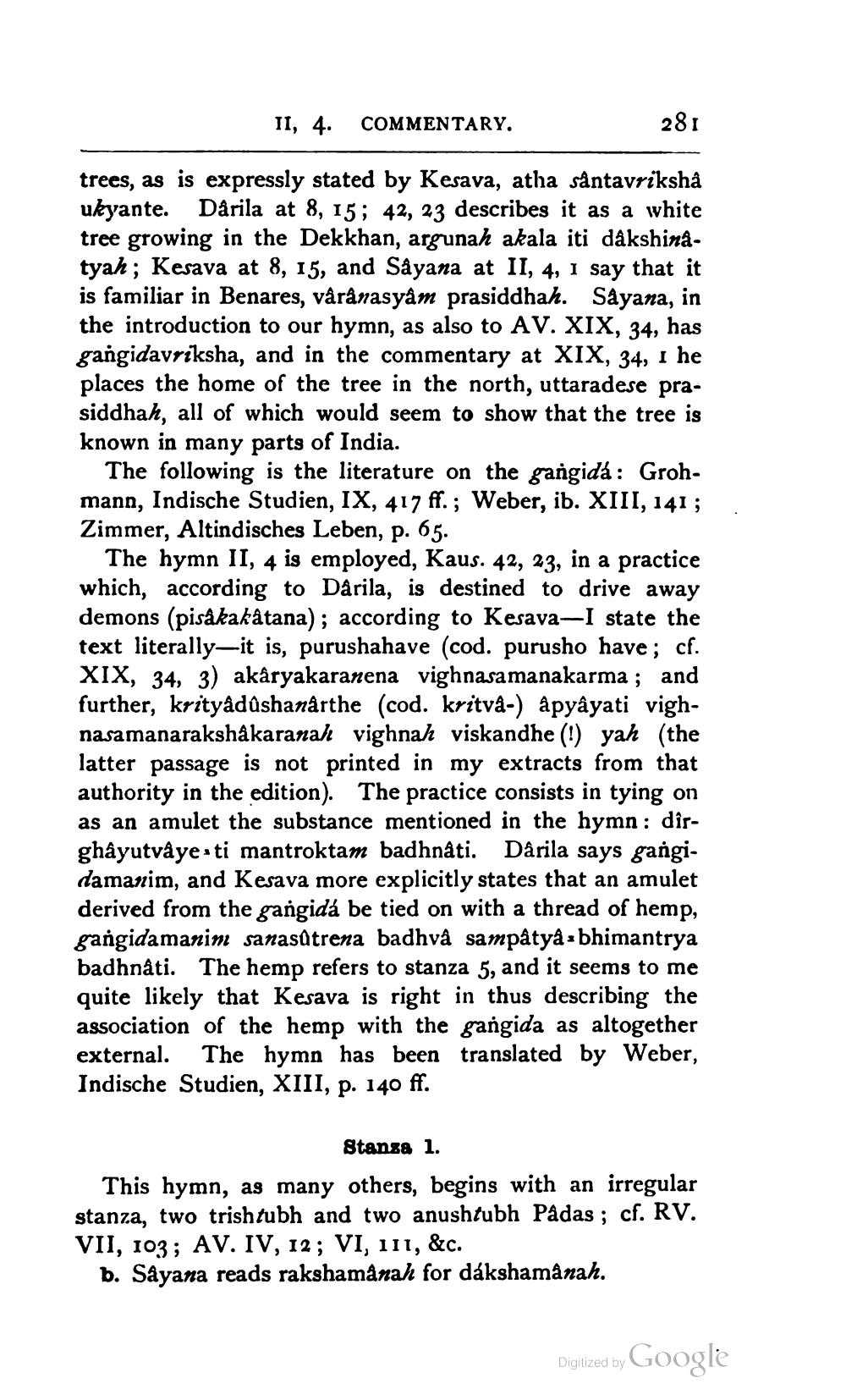________________
II, 4. COMMENTARY.
281
trees, as is expressly stated by Kesava, atha såntavriksha ukyante. Därila at 8, 15; 42, 23 describes it as a white tree growing in the Dekkhan, argunah akala iti dakshinatyah; Kesava at 8, 15, and Såyana at II, 4, 1 say that it is familiar in Benares, vårânasyam prasiddhah. Sayana, in the introduction to our hymn, as also to AV. XIX, 34, has gangidavriksha, and in the commentary at XIX, 34, 1 he places the home of the tree in the north, uttaradese prasiddhah, all of which would seem to show that the tree is known in many parts of India.
The following is the literature on the gangids : Grohmann, Indische Studien, IX, 417 ff.; Weber, ib. XIII, 141; Zimmer, Altindisches Leben, p. 65.
The hymn II, 4 is employed, Kaus. 42, 23, in a practice which, according to Darila, is destined to drive away demons (pisåkakatana); according to Kesava—I state the text literally—it is, purushahave (cod. purusho have; cf. XIX, 34, 3) akaryakaranena vighnasamanakarma; and further, krityâdûshanarthe (cod. kritva-) apyâyati vighnasamanarakshakaranah vighnah viskandhe (!) yah (the latter passage is not printed in my extracts from that authority in the edition). The practice consists in tying on as an amulet the substance mentioned in the hymn: dirghầyutvậye-ti mantroktam badhnati. Darila says gangi. damanim, and Kesava more explicitly states that an amulet derived from the gangids be tied on with a thread of hemp, gangidamanin sanasâtrena badhvå sampâtyåsbhimantrya badhnati. The hemp refers to stanza 5, and it seems to me quite likely that Kesava is right in thus describing the association of the hemp with the gangida as altogether external. The hymn has been translated by Weber, Indische Studien, XIII, p. 140 ff.
Stanza 1. This hymn, as many others, begins with an irregular stanza, two trishtubh and two anushtubh Padas; cf. RV. VII, 103; AV. IV, 12; VI, 111, &c.
b. Sayana reads rakshamanah for dákshamanah.
Digitized by Google




